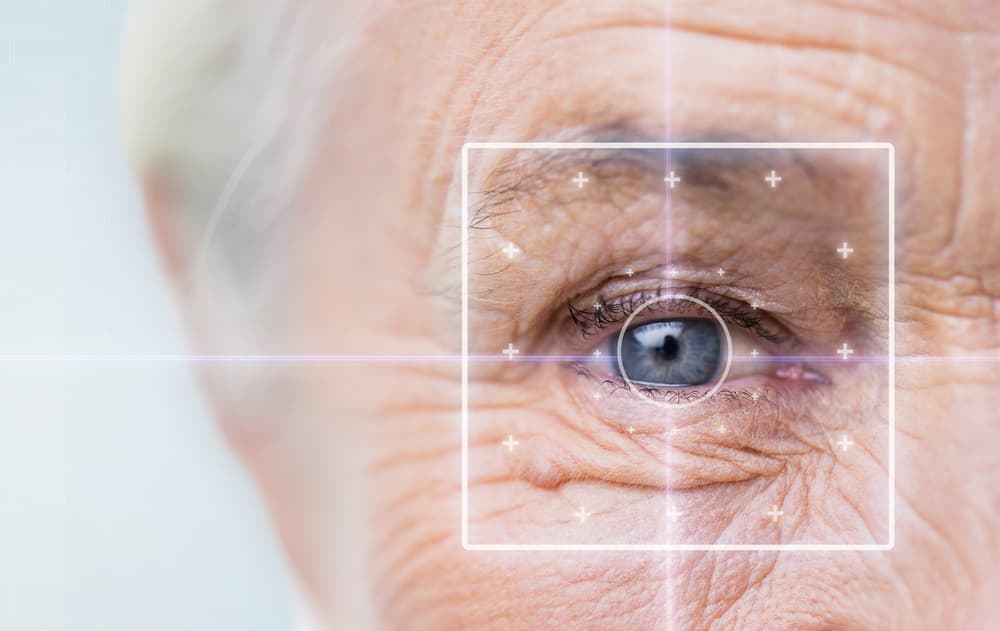
LASIK is a widely common and highly effective eye surgery that can treat nearsightedness, farsightedness, and astigmatism.
If you’re considering LASIK eye surgery, it’s important that you feel you are making a confident and informed decision. Having questions about the procedure, recovery, and more is expected. We’ve created a quick guide to answer six of the most common questions about LASIK surgery, so you can learn some basics before moving forward.
6 Common Questions about LASIK Eye Surgery
1. What is LASIK eye surgery?
Many people are generally familiar with LASIK as corrective eye surgery or may have friends or family members who have undergone the procedure. But precisely what is LASIK, and how does it work?
LASIK stands for “Laser-Assisted In Situ Keratomileusis,” which essentially translates to a procedure that involves using a specialized laser to reshape the cornea of your eye. This type of eye surgery is suited explicitly for vision problems caused by refractive errors when your eye cannot bend light properly (resulting in distorted vision).
2. How does LASIK work?
LASIK is a surprisingly simple procedure, though it requires a highly trained and skilled professional to perform it properly. In the simplest terms, your doctor will use the LASIK laser to change the shape of your cornea. Precision-level adjustments to the cornea shape will allow light to correctly hit your cornea, correcting your vision problems.
3. Which conditions can LASIK treat?
LASIK is intended for a variety of vision issues associated with refractive errors, such as:
- Nearsightedness (myopia): Nearsightedness, or myopia, is a vision issue where you can see nearby objects but not objects farther away.
- Farsightedness (hyperopia): Farsightedness, or hyperopia, is the opposite of nearsightedness. You can see objects far away, but not objects that are up close.
- Astigmatism: A common eye condition that causes blurred vision.
4. What is it like to get LASIK?
Before LASIK Eye Surgery
Before undergoing LASIK, you’ll have a consultation with your ophthalmologist. You’ll then undergo a series of tests to determine if you’re a suitable LASIK candidate. Generally, during your appointment(s) leading up to LASIK, your ophthalmologist will:
- Check the size of your pupils
- Measure the quality/amount of tears your eyes produce to check for dry eye
- Measure the surface of your cornea, as well as its thickness
- Assess the refractive error
- Test your vision to see if it has recently changed
- Check the overall health of your eyes
You will also need to prepare to stop wearing contact lessons for a period before LASIK. The amount of time you’ll need to wear your glasses depends on the type of lenses you wear: hard lenses (four weeks), soft lenses (two weeks), or toric soft lenses/rigid gas permeable lenses (three weeks).
Finally, 24 hours before LASIK, you will need to cease using perfumes, cosmetics, creams, and/or lotions. You will also need to plan to have a friend or family member drive you home after the surgery.
During LASIK Eye Surgery
There are five basic steps in the LASIK procedure:
- You will lie down flat, and your ophthalmologist will numb your eyes with special eye drops. You might feel a gentle pressure during the procedure (similar to the sensation of a finger against your eyelid), but no pain.
- Your surgeon will set up a suction ring and eyelid holder on your eye. The holder is to prevent blinking while the ring holds your eye still. Your vision will either dim or go completely black.
- Using a laser that has been programmed with your exact eye measurements, the surgeon will make a paper-thin flap in your cornea. They will then lift the flap, folding it back like the page of a book.
- Then, you will be asked to stare at a light shining in your eye to prevent eye movement. The laser will then be used to reshape the cornea. You might notice a clicking sound or a slight burning scent.
- Last, your surgeon will fold the flap of tissue back into place. Within two to three minutes, it begins healing.
In total, the procedure itself typically takes about 30 minutes.
After LASIK Eye Surgery
What is recovery from LASIK like? You may have some minor discomfort as your eyes heal, which is perfectly normal. You may also experience blurry or hazy vision, sensitivity to light, or other vision anomalies. These side effects are an expected part of the healing process.
Dry eyes are a common side effect of LASIK, so you may be sent home with lubricating eye drops, in addition to antibiotics and steroid drops. Your ophthalmologist may also have you temporarily wear a special shield over your face while you sleep, so you don’t accidentally touch your healing eyes.
The day after your surgery, you will return to your doctor for a check-in and vision test.
5. How long does LASIK recovery take?
The recovery time for LASIK is relatively brief. Most people can return to their normal activities within a day after surgery. For the first few hours, vision may appear to be a bit foggy but will then clear up after that. Patients must also refrain from swimming and strenuous activity for about two weeks.
6. How much does LASIK cost?
LASIK costs around $1997 per eye. It is a relatively simple surgery that can take less than an hour to complete and leave you with long-lasting clear vision.
Learn More at Our LASIK Eye Surgery Center in Shreveport, LA
The WK Eye Institute is a leading provider of LASIK in Shreveport, LA, and other eye surgery procedures such as PRK and SMILE. Our highly skilled ophthalmologists and eye doctors help you determine the best option for your vision goals and can combine various procedures to suit even the most unique of needs. Using state-of-the-art technology and extensive experience, the WK Eye Institute team delivers optimal results and an excellent experience to our patients.
For more information about LASIK, including how to know if you are a good candidate for LASIK, schedule an appointment at one of our offices today.
Image Source: Syda Productions/ Shutterstock



